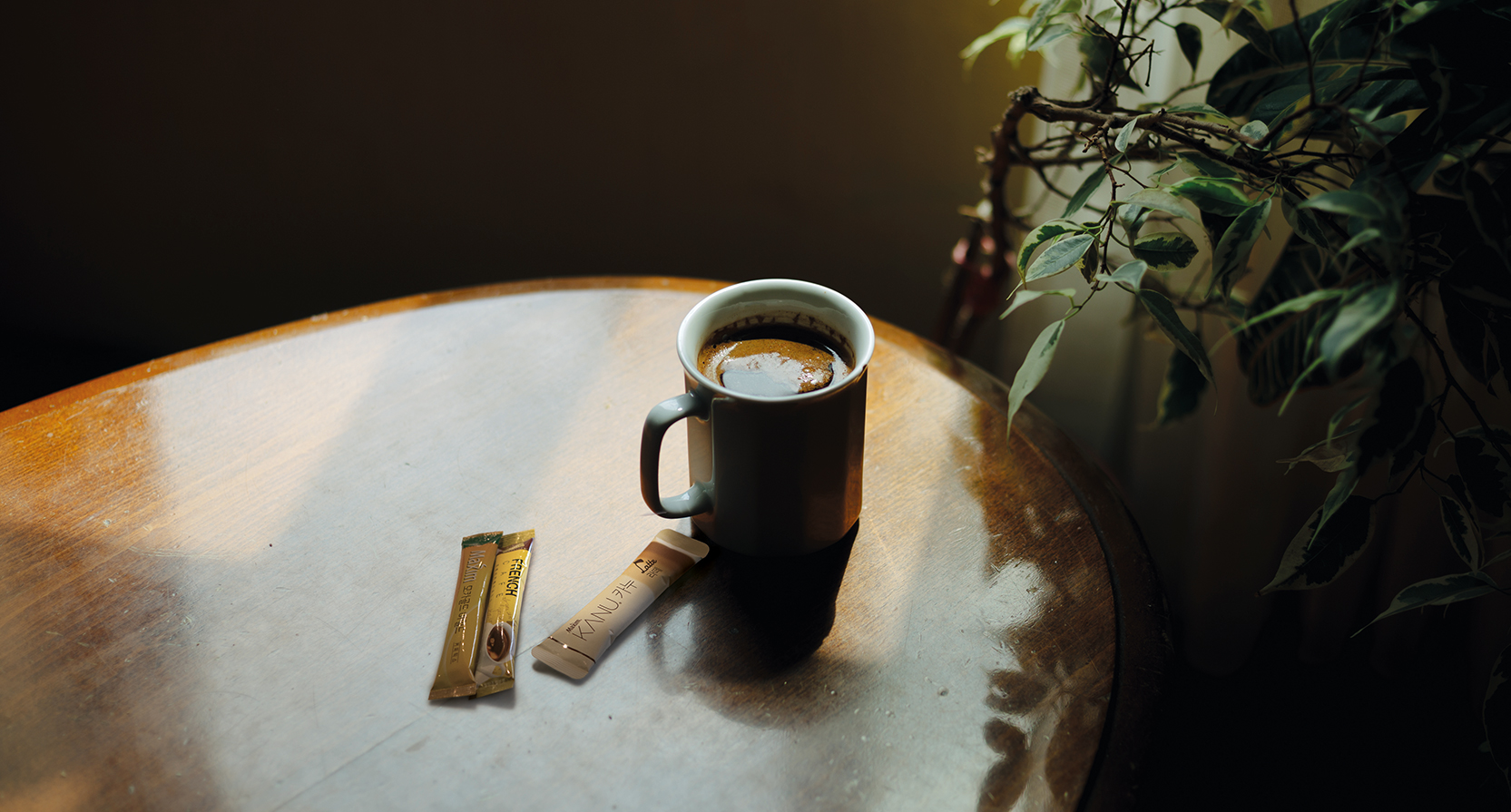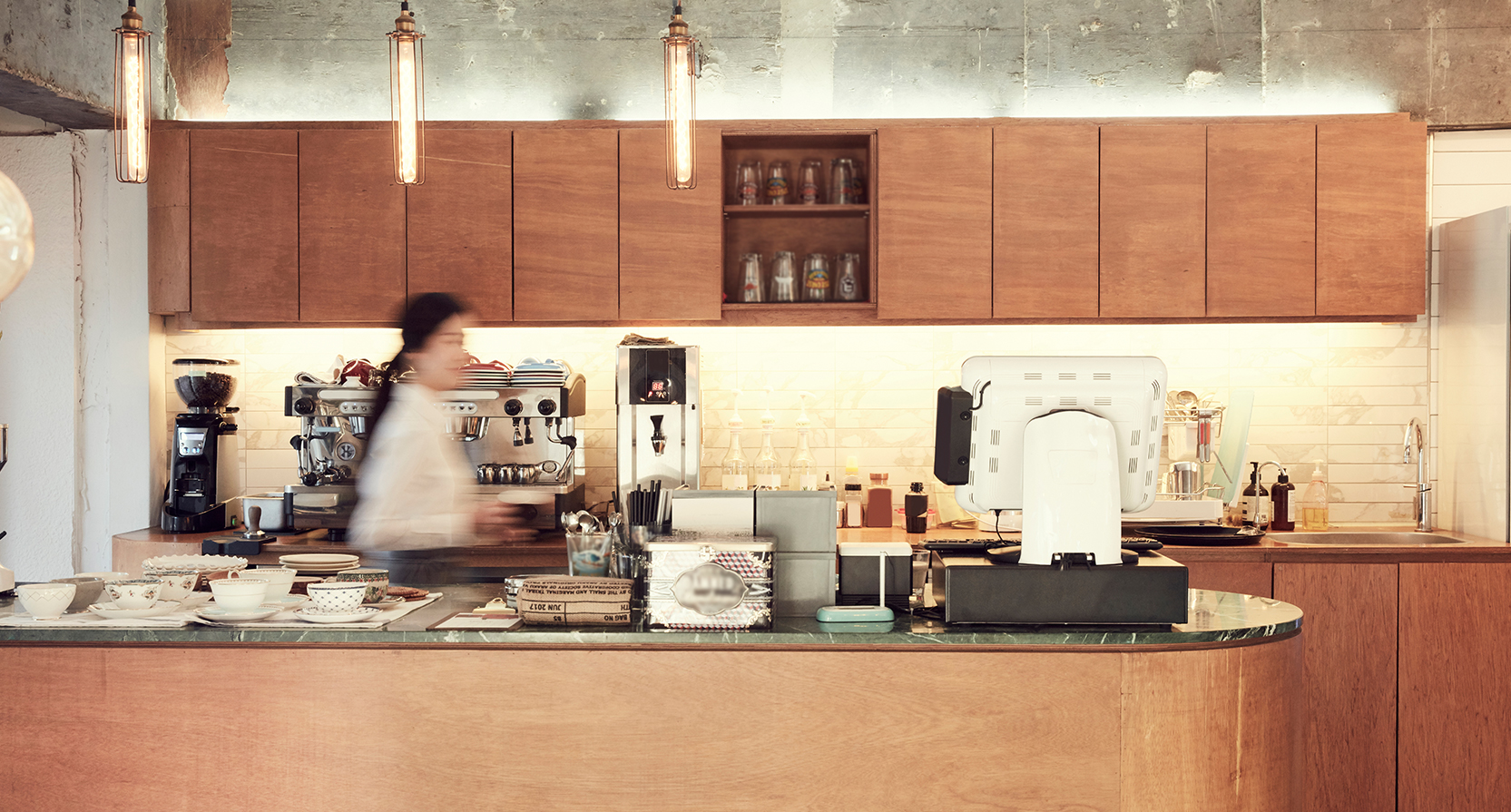March 2021

March 2021
At first glance, there appear to be as many coffee shops on Korea's streets as there are convenience stores. Even strolling along the country’s side streets and alleys, one is bound to come across a coffee shops outfitted with a state-of-the-art coffee roaster as large as a small car and where the lattes, Americanos, and flat whites are prepared by a prize-winning barista.
![]()
Written by
Todd Sample,
contributing writer

With coffee available nearly everywhere in the country, it is no surprise that coffee consumption in Korea is at an all-time high. Today, Korean adults on average down 353 cups of coffee per year, the country imported 176,648 tons of coffee in 2020 (a 5.4% year-on-year increase), and despite the appearance of a saturated market, coffee shops continue to open, with a vast majority of them being profitable! Korea is truly a coffee-loving nation.
The origins of Korea’s love affair with coffee date back to the final years of the 19th century when King Gojong was first offered a cup at the Russian Legation in 1896 after fleeing the invading Japanese. Enamored with the drink, upon eventually returning to Deoksugung Palace, King Gojong had a western-style building constructed called Jeonggwanheon, where he enjoyed his coffee on a daily basis. Although coffee consumption in Korea was initially limited to royalty, soon after, following the opening of Korea’s first coffee shop on the first floor of the Sontag Hotel, opened by none other than Antoinette Sontag the sister-in-law of the Russian ambassador and the person who first introduced King Gojong to coffee, coffee shops called dabang began to pop up where coffee was savored by the country’s elite as a symbol of western culture and status.
 © National Folk Museum of Korea
© National Folk Museum of Korea
 © Cultural Heritage Administration
© Cultural Heritage Administration
The appeal of coffee among the general public grew after the Korean War with the arrival on the Peninsula of coffee mix brought into the country by American forces. As the country started down the road to post-war recovery, the popularity of coffee shops also began to boom. By the late 1950s, Korea was home to over 3,000 coffee shops, with nearly one-third in the capital city. These dabangs were where businessmen would come to discuss business and be served coffee by young women. Once easy to see in neighborhoods throughout the country even until the late 1990s, dabangs became harder and harder to find as more modern style coffee shops began to attract younger crowds of women and men in search of a less outdated vibe, while the preferred venue for business discussions evolved to the golf course as the sport’s popularity started to grow.
Not unlike today, Korea’s coffee of preference outside of the coffee shop from the 1970s to the 1990s was also consumed from a paper cup, albeit a much smaller one than those which have now become a part of our daily lives. Coffee dispensed in small papers cups from vending machines was the drink of choice for millions of Koreans. As opposed to the lattes, cappuccinos, and Americanos we find ourselves addicted to today, the selection of coffees available from a vending machine included “milk” (coffee mix, powdered cream, and sugar), “black” (coffee mix), and “prima” (coffee mix and powdered cream), while for non-coffee drinkers, “cocoa” (hot chocolate) and Job’s Tears tea. In addition to the appeal of a strong (and often sweet) dose of caffeine in a small cup, that vending machine coffee only cost KRW 200-300 made it one of the most popular drinks among office workers and students.
 © GettyImages
© GettyImages
The addictiveness of cheap, but strong, vending coffee stood in contrast to the watered-down “hazelnut” coffee available at coffee shops around the country from the late 1980s to the late 1990s where chatting with friends was a higher priority than drinking quality coffee.
The year 1999 is a significant one in the modern history of coffee in Korea as it was in this year when the country’s first Starbucks opened in front of Ehwa Womans University, considered one of the country’s trend-setting neighborhoods. It was at this time when the concept of the “third space” took hold among Korea’s younger population. Instead of a destination solely sought out for chatting with friends and classmates and where one would almost never visit alone, the new type of coffee shop that Starbucks represented, in addition to the diverse coffee varieties not available at Korean-style cafes or dabang, also served as a place where one could study or work on one’s own.
 © shutterstock
© shutterstock
 © YonhapNews
© YonhapNews
Fast-forward two decades and there are literally thousands of franchise and individually owned coffee shops all over Korea. Bakeries, convenience store, and even fast-food eateries are in on the coffee game as the nation’s need for coffee goes unsatiated. It is predicted that the coffee market in Korea will grow to KRW 8.6 trillion in 2023, a nearly 50% increase from KRW 5.9 trillion in 2016.
Perhaps not surprisingly, although visits to coffee shops during 2020 dropped significantly due to the Covid-19 pandemic, South Korea’s coffee and espresso imports surged to record levels in 2020 as the global health crisis drove up even higher demand for coffee due to remote working environment and social distancing. Accordingly, espresso machine imports also rose during 2020 to USD 120.5 million, a 35% year-on-year increase. It is numbers like this which prove that Korea is, in fact, an Asian coffee powerhouse.
Credible stats attest to how
Korea has in fact, positioned itself
as an Asian coffee powerhouse.
 © imagetoday
© imagetoday